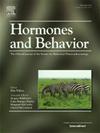先天性肾上腺增生或完全雄激素不敏感综合征女性的空间能力、情景记忆和情绪识别
IF 2.4
3区 医学
Q2 BEHAVIORAL SCIENCES
引用次数: 0
摘要
先天性肾上腺增生(CAH)和完全雄激素不敏感综合征(CAIS)等疾病可能为解释认知方面的性别差异提供信息。通过在线测试和问卷调查,我们研究了产前雄激素暴露和/或性染色体如何影响经典CAH妇女的空间能力、情景记忆和情绪识别(C-CAH;n = 29),非经典CAH (NC-CAH;n = 13), CAIS (n = 11),女性(n = 147)和男性(n = 142)对照。结果显示:(1)女性和男性对照组在大多数认知任务上存在差异,而(2)患有C-CAH或CAIS的女性与女性或男性对照组没有一致的差异。研究结果表明,C-CAH在女性(情景记忆、情绪识别)和男性偏好任务(空间能力)上的相对优势表明,C-CAH在女性偏好任务上的相对优势与女性和男性对照组不同,而NC-CAH在女性偏好任务上的相对优势与男性对照组无显著差异。这些发现表明,过多的产前雄激素暴露(C-CAH)可能会使认知表现向男性典型模式转变,尽管不是男性水平。此外,与46,XY核型相关的方面,但缺乏产前雄激素接受性(CAIS)也可能影响男性典型方向的认知,为产前雄激素假说提供了混合支持。本文章由计算机程序翻译,如有差异,请以英文原文为准。
Spatial ability, episodic memory, and emotion recognition in women with congenital adrenal hyperplasia or complete androgen insensitivity syndrome
Conditions like congenital adrenal hyperplasia (CAH) and complete androgen insensitivity syndrome (CAIS) may provide information contributing to the explanation of sex differences in cognition. Using online tests and questionnaires, we examined how prenatal androgen exposure and/or sex chromosomes influence spatial ability, episodic memory, and emotion recognition in women with classic CAH (C-CAH; n = 29), non-classic CAH (NC-CAH; n = 13), CAIS (n = 11), and female (n = 147) and male (n = 142) controls. Results showed that (1) female and male controls differed on most cognitive tasks, whereas (2) women with C-CAH or CAIS did not consistently differ from either female or male controls. Investigating the relative advantage on either the female (episodic memory, emotion recognition) or male-favoring tasks (spatial ability), indicated that women with (3) C-CAH had a cognitive profile that was different from female and male controls, (4) CAIS were not different from male controls, whereas (5) NC-CAH had a relative advantage on female-favoring tasks. These findings suggest that excessive prenatal androgen exposure (C-CAH) may shift cognitive performance toward a male-typical pattern, though not to the male level. Additionally, aspects associated with having 46,XY karyotype, but lacking prenatal androgen receptivity (CAIS) may also influence cognition in a male-typical direction, providing mixed support for the prenatal androgen hypothesis.
求助全文
通过发布文献求助,成功后即可免费获取论文全文。
去求助
来源期刊

Hormones and Behavior
医学-行为科学
CiteScore
6.70
自引率
8.60%
发文量
139
审稿时长
91 days
期刊介绍:
Hormones and Behavior publishes original research articles, reviews and special issues concerning hormone-brain-behavior relationships, broadly defined. The journal''s scope ranges from laboratory and field studies concerning neuroendocrine as well as endocrine mechanisms controlling the development or adult expression of behavior to studies concerning the environmental control and evolutionary significance of hormone-behavior relationships. The journal welcomes studies conducted on species ranging from invertebrates to mammals, including humans.
 求助内容:
求助内容: 应助结果提醒方式:
应助结果提醒方式:


